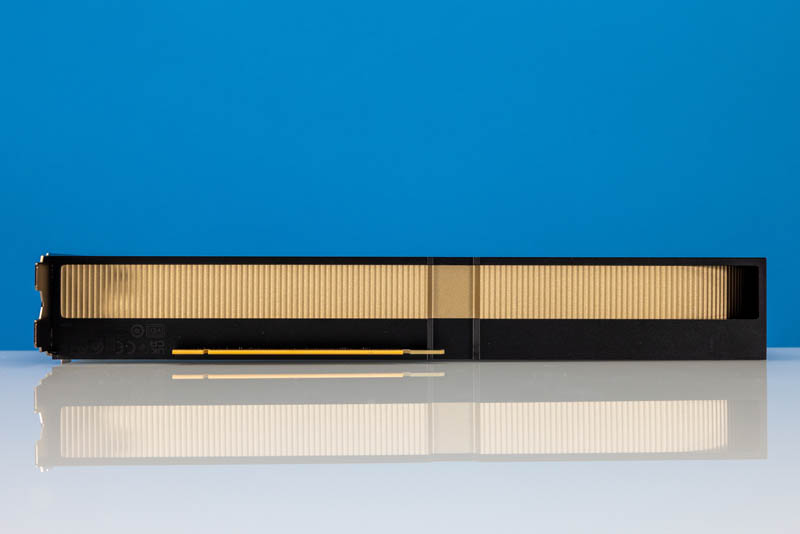The NVIDIA RTX 6000 Ada (not to be confused with the NVIDIA Quadro RTX 6000) is the company’s new high-end workstation GPU. It offers a ton of performance and ECC memory capacity in a relatively easy-to-integrate dual-slot blower cooler. While the NVIDIA GeForce RTX 4090 is a very capable, but huge GPU, this is more mundane in size and is intended for professional applications. If you purchase a NVIDIA RTX 6000 in a pre-built workstation or loose, there is a good chance it comes via PNY who helped us do this review. Thanks to PNY for the support on this. Let us get to the review.
NVIDIA RTX 6000 Ada Graphics Card Review
First off, the NVIDIA RTX 6000 is a dual-slot blower-style cooler design. Blower-style coolers fell out of favor as TDPs increased after the “Pascal” generation of GPUs. The advantage of these GPUs is that they are much more compact and are designed to fit in workstations including those that fit server-like dual-width GPUs.

Something that may not be obvious, but that we showed in our previous BOXX APEXX S3 Overview is that these cards are very glossy. Enough so that high-end cameras like the Canon R5 and even the Sony Alpha 1 will focus on components reflected off of the surface of the card.

The rear of the card has a full card backplate. This is a matte finish contrasting with the glossy opposite side. In either event, this is not a RGB-laden design which is refreshing.

NVIDIA is still using its “Gold” ribbed coloring for the top and bottom edges of the GPU. Here we can also see the PCIe x16 connector.

The top of the unit will give folks pause. While there are connectors for things like the 3D stereo function there is a notable absence. The NVIDIA RTX 6000 Ada generation does not have NVLink. Given the cost and level of this card, this may shock some of our readers. The previous generation NVIDIA RTX A6000 48GB GPU did support NVLink.

The end of the card is a solid piece of metal except for two features. There are two screw mounting points for GPU retention brackets. Those are common in high-end workstations like the Lenovo ThinkStation P620 and Supermicro AS-5014A-TT workstations. Comparison video on those here. The other feature is the PCIe CEM5 16-pin power connector. This is placed at the end so as to make for easy cable routing and minimal airflow disruption.

The more exciting end of the GPU is the I/O side. Here we have four DisplayPort 1.4a ports. There is also ample room devoted to the cooler design. These ports are active by default, but for those using the vGPU functionality, they will be disabled.

Now let us move on to the Specifications of the NVIDIA RTX 6000 Ada.





nice review, was wondering why the RTX A6000 wasn’t taken into the comparisons, the “original” RTX A6000 is a generation before that, the A6000 is one generation old
edit: the “original” RTX 6000 (minus the A), and i ment it is 2 generations old,
sorry for the typo
Did you use Nvidia’s “Studio Driver” for the 4090 tests? That driver has optimizations for some professional applications. I’m particularly interested to see if the 4090 gets a performance increase for the specviewperf tests.
junk in price/performance terms. But we don’t have other choice if we want to use +24GB memory over the 3090/4090 memory (for 3x the price – wow sooo expensive extra 24G GDDR-6). The premium price is clearly usage of the monopoly situation of Nvidia.